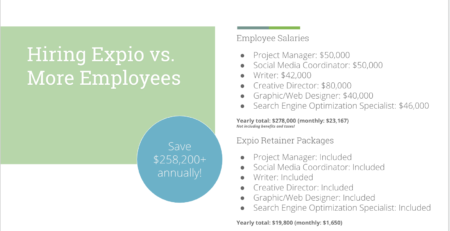Your Website Is Costing You Clients (Especially If You’re in a Regulated Industry)
Mark walked into our office frustrated. His engineering firm’s website had been live for five years, but inquiries from prospective clients were flat. The site was technically “compliant” with legal disclaimers, industry certifications, etc., but it was confusing, text-heavy, and left visitors unsure of what the firm actually did.
If your website looks like Mark’s, you’re not alone. Business owners in healthcare, aviation, engineering, and legal industries often treat their website like a regulatory checklist, not a client acquisition tool. The result? Lost opportunities, frustrated visitors, and stagnant growth.
Why Your Website Might Be Failing
Many regulated businesses focus so heavily on compliance that clarity and usability fall by the wayside. Common problems include:
- Jargon overload: Visitors see long paragraphs full of technical terms or legal phrases they don’t understand.
- Unclear services: Potential clients can’t quickly tell if you can solve their specific problem.
- Hidden CTAs: Contact forms, consultation requests, or appointment booking buttons are buried or unclear.
- Slow or outdated design: Even small UX issues can drive visitors away.
In regulated industries, your website isn’t just a marketing tool. It’s often the first interaction a client has with your brand. Confusion here costs more than just clicks; it costs trust.
The Cost of Confusion
Consider this: A medical practice with a confusing site might lose a patient to a competitor who clearly explains services, insurance coverage, and scheduling options. An engineering firm with unclear messaging may miss a contract because prospective clients couldn’t understand the scope of services.
Even worse, a confusing website can undermine credibility, making your compliance and certifications meaningless if visitors can’t quickly grasp your expertise.
How Clarity Can Transform Your Website
Clarity is the antidote to confusion. Here’s how regulated businesses can apply it:
- Simplify messaging
Use plain language that explains what you do and who you help. Example:- Instead of: “Leveraging integrated aeronautical solutions…”
- Try: “We design aircraft systems that keep passengers safe.”
- Highlight your audience and services
Make it clear who your services are for. Prospective clients should instantly know if you’re the right fit. - Design for action
Make it easy for visitors to take the next step like scheduling a consultation, requesting a quote, or booking an appointment. Buttons should be visible and straightforward. - Keep compliance visible but unobtrusive
Disclaimers, certifications, and legal notes are necessary, but they don’t need to overwhelm the page. Place them where they inform without distracting.
Why Expio Helps Regulated Businesses Succeed Online
At Expio, we specialize in making regulated businesses’ websites work for growth. Our process includes:
- Reviewing your website for clarity, user experience, and compliance.
- Rewriting content to be understandable, persuasive, and compliant.
- Optimizing design and calls-to-action so visitors can easily take the next step.
- Ensuring your compliance elements are present but unobtrusive.
The outcome: a website that not only passes regulatory review but actually converts visitors into clients.
The Bottom Line
In regulated industries, a confusing website isn’t just inconvenient, it’s costing you clients. Clear messaging, straightforward design, and smart CTAs transform your website from a static compliance checklist into a powerful growth tool.
Your next client could be just one click away, but only if your website says clearly what you do and who you help.
Ready to turn your website into a client-generating machine? Schedule a consultation with Expio today.






Leave a Reply